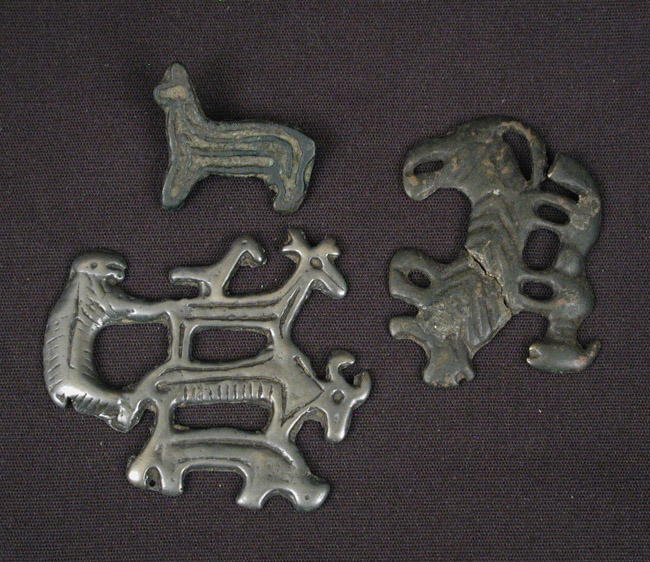previous image || Metal and Stone Vestiges main article || next image
Metal
and Stone Vestiges
Religion, Magic and Protection in the Art of Ancient Tibet
Image 3c
| For close stylistic comparison with analogous rock art
compositions, refer to the single animal at the top of this image. This
probable wild herbivore was cast with deeply cut lines circumscribing
the body. The accessory attachment on the reverse side was manufactured
by simply brazing two metallic protuberances extending from the body of
the animal into a v-shaped loop. The manufacture and modeling of this
thokcha indicates that it belongs to the earliest period of the
Tibetan metalworking tradition. This may chronologically correspond with
either the Bronze Age or early Iron Age of Central Asia.
The other two amulets in this image are those of multiple animals,
representing an unusual style of thokcha. The specimen on the
right (shown sideways) depicts a yak resting on what is probably a tiger
with a gaping mouth. The other specimen boasts five animals that appear
to include (bottom to top): carnivore with gaping jaws, yak, deer (?),
and bird. The animal on the left side of the layered of animals might
be representative of a sheep. The significance of compounded animals
in this genre of pre-Buddhist or early Buddhist thokchas has
been lost. We might conjecture that it had something to do with the
hunter-prey relationship and the success of hunting expeditions. |
all text & images © John Vincent Bellezza
previous image || Metal and Stone Vestiges main article || next image
